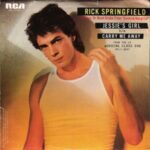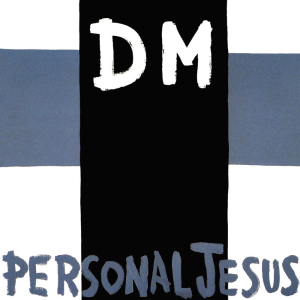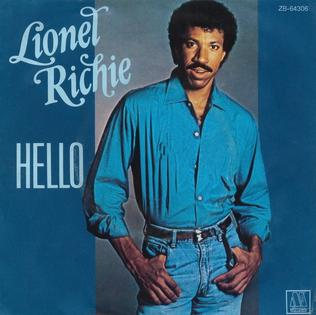 Some songs don’t just become hits—they become generational touchstones, the kind of tracks that feel baked into the cultural soundtrack regardless of your age or background. “Jessie’s Girl,” released in 1981, is one of those songs that seems to exist in a perpetual state of replay, as if every bar band, radio station, wedding DJ, car commercial, and nostalgic movie scene agreed it simply must be heard at least once every few days. What makes it even more impressive is that Rick Springfield didn’t craft “Jessie’s Girl” as a calculated attempt at pop immortality. Instead, he wrote a frustrated plea from the heart—or at least the ego—about a simple, painfully relatable moment: falling head-over-heels for the girlfriend of the guy you’re supposed to be friends with.
Some songs don’t just become hits—they become generational touchstones, the kind of tracks that feel baked into the cultural soundtrack regardless of your age or background. “Jessie’s Girl,” released in 1981, is one of those songs that seems to exist in a perpetual state of replay, as if every bar band, radio station, wedding DJ, car commercial, and nostalgic movie scene agreed it simply must be heard at least once every few days. What makes it even more impressive is that Rick Springfield didn’t craft “Jessie’s Girl” as a calculated attempt at pop immortality. Instead, he wrote a frustrated plea from the heart—or at least the ego—about a simple, painfully relatable moment: falling head-over-heels for the girlfriend of the guy you’re supposed to be friends with.
More than four decades later, the song still hits that sweet spot of punchy, new-wave–tinged rock that defined the early ’80s. Those power chords, that driving rhythm, the unforgettable chorus—every element lands with a kind of lightning-in-a-bottle energy. But beyond its sonic hooks, “Jessie’s Girl” endures because it taps into an emotional cocktail nearly everyone has tasted at some point: desire, jealousy, insecurity, and that stubborn belief that if only the universe were a little kinder, we’d get the person we really want. It’s that mix of angst and adrenaline, wrapped in one of the catchiest melodies ever written, that keeps the song alive and pulsing across decades.
An Anthem Born From Awkward Longing
The story behind “Jessie’s Girl” has been told so many times it’s practically become rock folklore. Rick Springfield was taking a stained-glass class—yes, really—when he befriended a guy whose girlfriend was so captivating that Springfield found himself completely smitten. The guy’s name wasn’t actually Jessie, but Springfield swapped in the name because it fit the melody better. That small tweak ended up making the song exponentially more memorable. “Gary’s Girl” doesn’t exactly have the same punch.
Springfield used the experience as creative fuel, crafting lyrics that felt confessional without being self-pitying. He didn’t sugarcoat anything. This wasn’t a noble, tortured love—it was jealousy, frustration, and ego all tangled together. He openly admits he wants Jessie’s girl, not just “a girl like her.” That specificity—paired with a near-comic level of emotional honesty—makes the song so endearing. Springfield isn’t trying to be the hero. He’s just a guy who wants what he shouldn’t want, knowing full well he’s probably in the wrong.
The brilliance lies in how universal this messy, slightly shameful feeling is. It’s the emotional equivalent of staring too long at someone you shouldn’t, knowing that if anyone could hear your inner monologue, you’d be mortified. “Jessie’s Girl” lets listeners indulge those emotions without guilt.
The Sound of an Era—With Hooks That Still Hit Hard
Musically, “Jessie’s Girl” is a masterclass in catchy ’80s pop-rock. Springfield and his producer Keith Olsen knew how to build tension and release in a way that feels almost architectural. The guitar riff is instantly recognizable—bright, punchy, and slightly aggressive. It grabs you before the lyrics even begin.
When the pre-chorus hits (“I wanna tell her that I love her but the point is probably moot…”), the song launches into an emotional sprint. Springfield articulates his romantic paralysis with such directness that it almost feels like he’s pacing back and forth in the studio, venting to anyone who will listen.
Then the chorus arrives—explosive, anthemic, impossible to resist. Springfield’s voice leaps with both desperation and swagger, as if belting out “I wish that I had Jessie’s girl!” might somehow make the universe bend to his will. It’s a chorus that demands to be shouted, whether you’re sober, tipsy, or stuck in traffic.
The production is equally crucial. Released in 1981, the song sits right at the intersection of late ’70s power pop and early ’80s new wave. You can hear the grit of classic rock guitars, the crispness of new-wave rhythm, and the catchy, radio-friendly polish that made Springfield one of the decade’s most charismatic crossover stars.
1981: The Year It All Clicked
The year “Jessie’s Girl” dropped was a transitional moment in pop culture. MTV was about to launch. New wave was reshaping rock radio. Synths were creeping deeper into mainstream production. And fashionable angst—especially about relationships—was becoming part of the cultural fabric.
Springfield, who had been juggling acting and music for years, found himself perfectly positioned for this moment. His role on General Hospital as Dr. Noah Drake made him a teen idol, while his music gave him credibility beyond the soap opera fanbase. “Jessie’s Girl” wasn’t just a hit—it was a phenomenon that made Springfield a household name.
In hindsight, it’s easy to assume the song was destined for success. But at the time, nothing was certain. Springfield had seen near-misses in his music career before. But 1981 was the year everything aligned. “Jessie’s Girl” shot to number one, won a Grammy, and cemented him as one of the defining artists of the early ’80s.
A Song That Refuses to Age
One of the strangest and most delightful things about “Jessie’s Girl” is how fresh it still feels. There’s no irony to its appeal. It’s just a killer pop-rock song that understands how desire works: messy, inconvenient, sometimes embarrassing, yet absolutely energizing.
In the decades following its release, the track found new pop-cultural life in movies, commercials, TV shows, and karaoke bars. You can hear it in Boogie Nights, 13 Going on 30, Glee, and countless other moments where filmmakers want to capture a burst of youthful longing or nostalgic joy.
Why does it work so well across generations?
Because the emotions at its core never age. Wanting someone you can’t have is as old as time. Feeling overshadowed by a friend happens in every era. And the mix of frustration and fantasy—expressed through Springfield’s explosive chorus—remains instantly relatable.
Even if you’ve never been in Springfield’s exact situation, you feel like you have.
The Genius of Plainspoken Longing
What makes the lyrics so effective is their sheer directness. Springfield doesn’t hide behind metaphor or poetic phrasing. He’s not shy about telling you exactly what he wants, how jealous he is, and how annoyed he feels about the situation. It’s refreshing in its honesty.
Lines like:
“I feel so dirty when they start talking cute”
and
“I wanna tell her that I love her but the point is probably moot”
aren’t elegant in a literary sense—they’re elegant in a human sense. They sound like the kind of things someone would say when venting to a close friend, which gives the song a conversational charm.
The real emotional punch, though, comes from the chorus. The repetition of “I wish that I had Jessie’s girl” hits like a mantra he can’t shake. And the kicker—“Where can I find a woman like that?”—reveals the truth: he doesn’t just want her. He wants the idealized version of her he’s projected in his mind.
That’s what makes the song more nuanced than it first appears. Springfield captures the way desire can warp reality, making you believe someone is perfect simply because they’re unavailable.
A Pop-Rock Blueprint That Still Inspires
“Jessie’s Girl” has had an enormous influence on pop-rock songwriting. Its blend of emotional vulnerability, storytelling, and catchy musical structure became a template for countless artists who wanted to merge rock energy with pop sensibility.
Bands from the ’90s and 2000s—like Gin Blossoms, Fountains of Wayne, Bowling for Soup, and even early-era Maroon 5—carry echoes of Springfield’s style. The mixture of power chords, clear melody, and slightly self-deprecating lyrics remains a winning formula.
Even now, contemporary artists continue to reference or nod to the song, either through covers, lyrical tributes, or similar melodic structures. “Jessie’s Girl” has become part of the DNA of modern pop-rock.
Why the Song Still Feels So Good to Sing
At its core, “Jessie’s Girl” is cathartic. It taps into the powerful thrill of confessing a truth you’d never actually say out loud in real life. Most people would never walk up to a friend and admit, with Springfield’s level of enthusiasm, that they desperately want their girlfriend. But the song lets you enter that emotional space for three and a half minutes—safely, gleefully, explosively.
Singing the chorus isn’t about wanting Jessie’s girl specifically. It’s about the universal joy of releasing pent-up emotion, longing, insecurity, and frustration all at once. It’s a pressure valve in musical form.
And that’s why people of all ages still shout it at the top of their lungs in bars, cars, and living rooms.
The Unshakable Legacy of a Perfect Pop-Rock Hook
More than forty years after its release, “Jessie’s Girl” stands as one of the greatest pop-rock songs ever recorded. It’s catchy, emotional, funny, relatable, and musically airtight. It captures a feeling that’s deeply human and packages it in a melody that refuses to let go.
Rick Springfield didn’t just create a hit—he created a cultural artifact, a song that future generations will keep rediscovering. Whether it’s heard in a movie scene, blasted over a stadium speaker system, or belted in a karaoke booth, it remains part of the shared musical language.
And the best part? It still sounds thrilling every single time.
“Jessie’s Girl” isn’t just a song from 1981—it’s a timeless anthem of longing, desire, and the bittersweet comedy of wanting what you can’t have. And as long as people keep falling for the wrong person, Springfield’s punchy, perfect chorus will keep echoing louder than ever.


